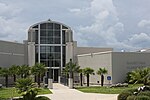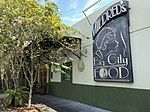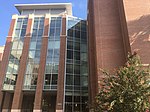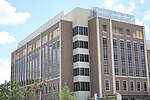University of Florida Southwest Recreation Center

The Southwest Recreation Center, is one of three athletic facilities at the University of Florida with services available to students, alumni, and faculty members. The facility had a major expansion in 2010 that includes an expanded cardiovascular room and an indoor track. Facilities include A 140,000 square feet (13,000 m2) strength and conditioning room Six indoor basketball courts Five indoor racquetball courts A multipurpose gymnasium for indoor soccer, handball, and basketball A 15,000 square feet (1,400 m2) split-level room with cardiovascular equipment Two Massage Therapy rooms Personal Training studio Fitness Assessment Center (FAC) Athletic Training room Three Activity rooms Men’s and Women’s locker rooms with digital locks Day lockers Social lounge
Excerpt from the Wikipedia article University of Florida Southwest Recreation Center (License: CC BY-SA 3.0, Authors, Images).University of Florida Southwest Recreation Center
Hull Road, Gainesville
Geographical coordinates (GPS) Address Phone number Website External links Nearby Places Show on map
Geographical coordinates (GPS)
| Latitude | Longitude |
|---|---|
| N 29.638416666667 ° | E -82.368361111111 ° |
Address
Southwest Recreation Center
Hull Road 3150
32611 Gainesville
Florida, United States
Open on Google Maps











